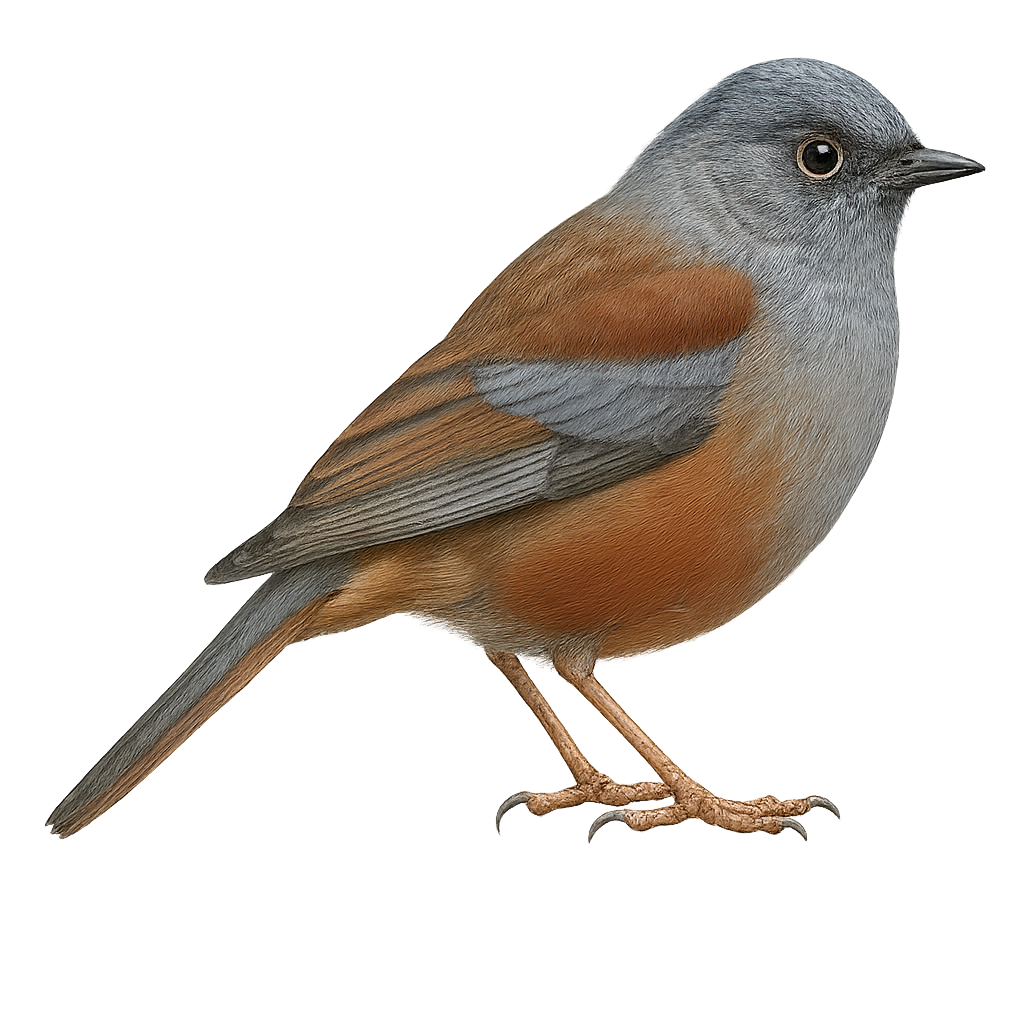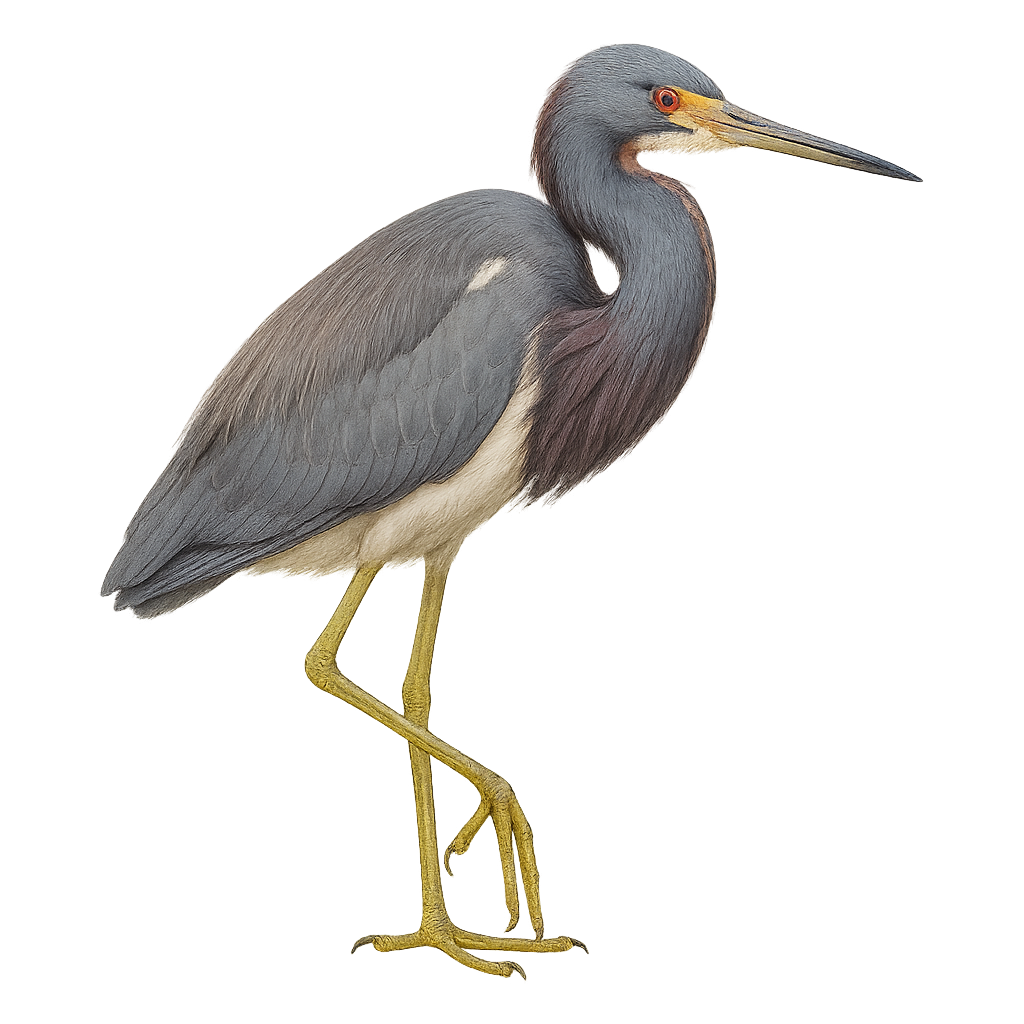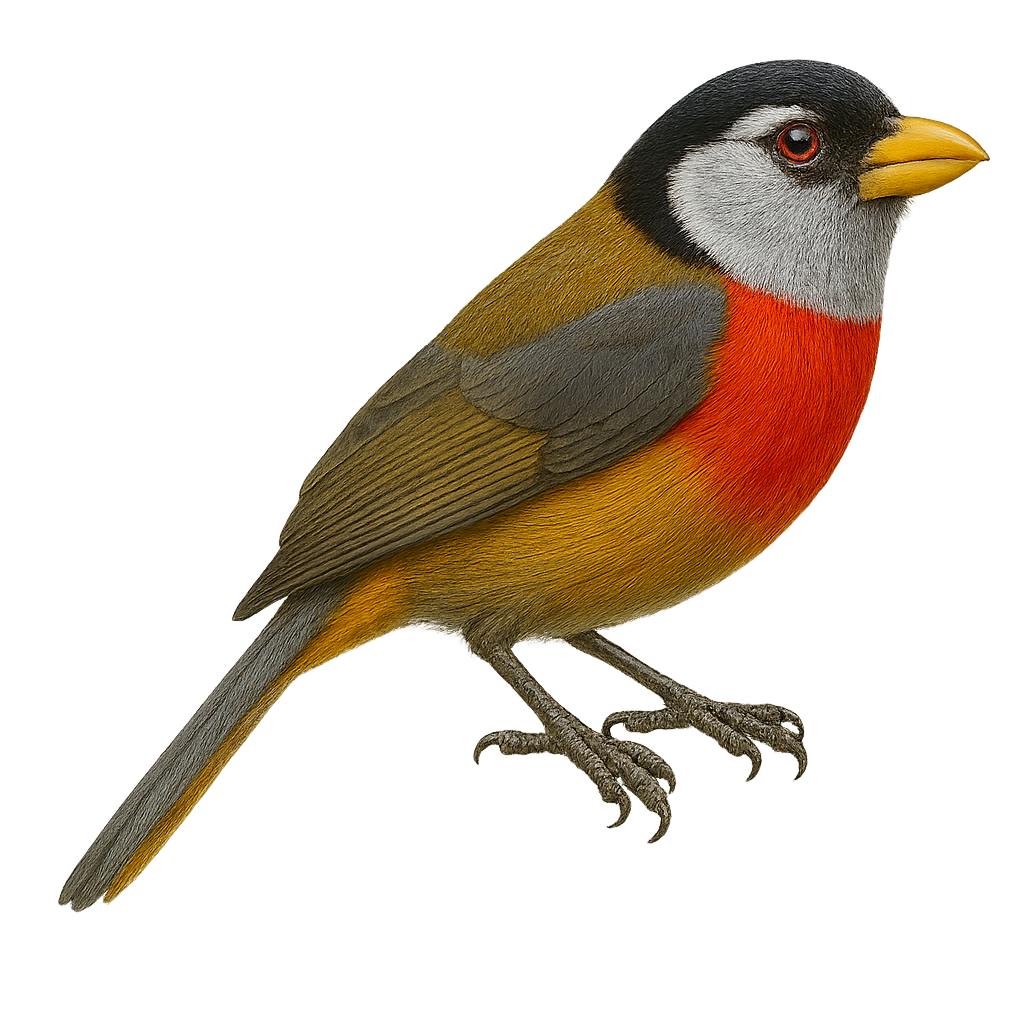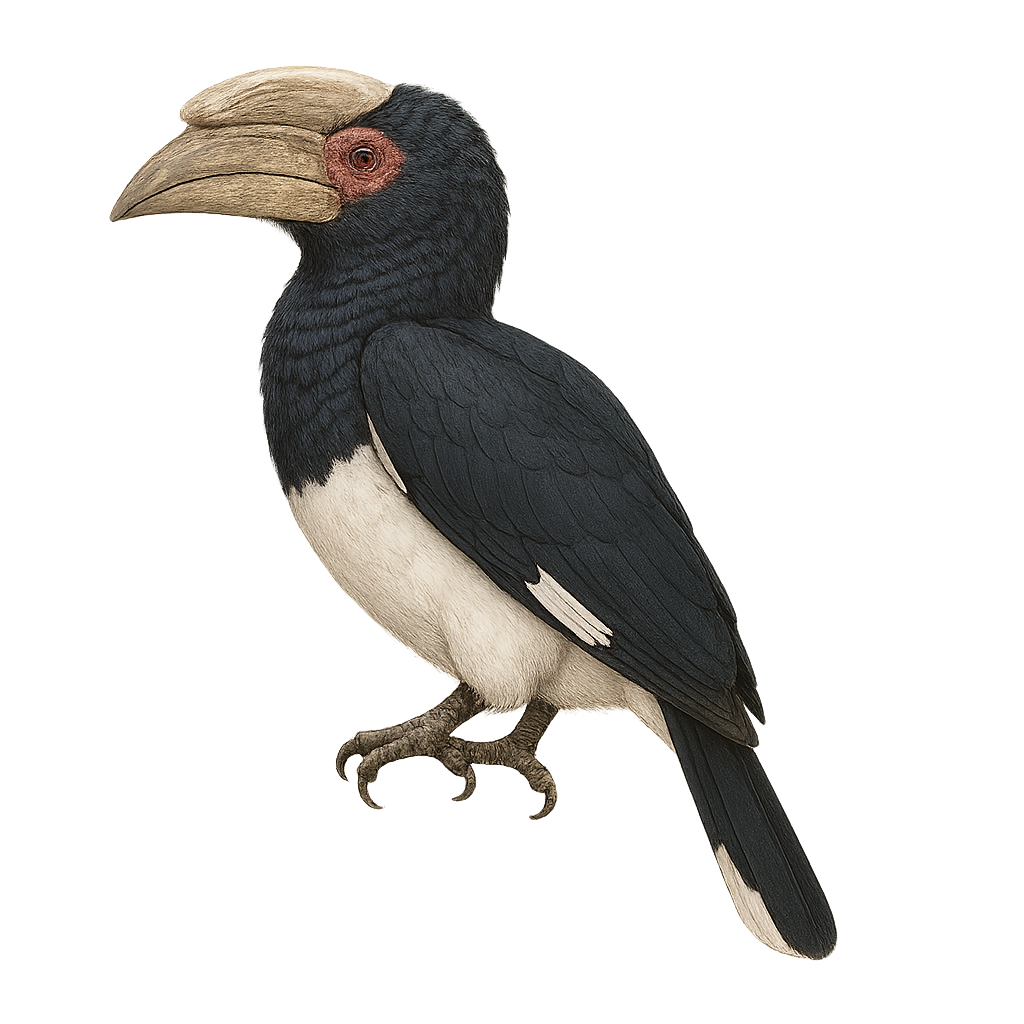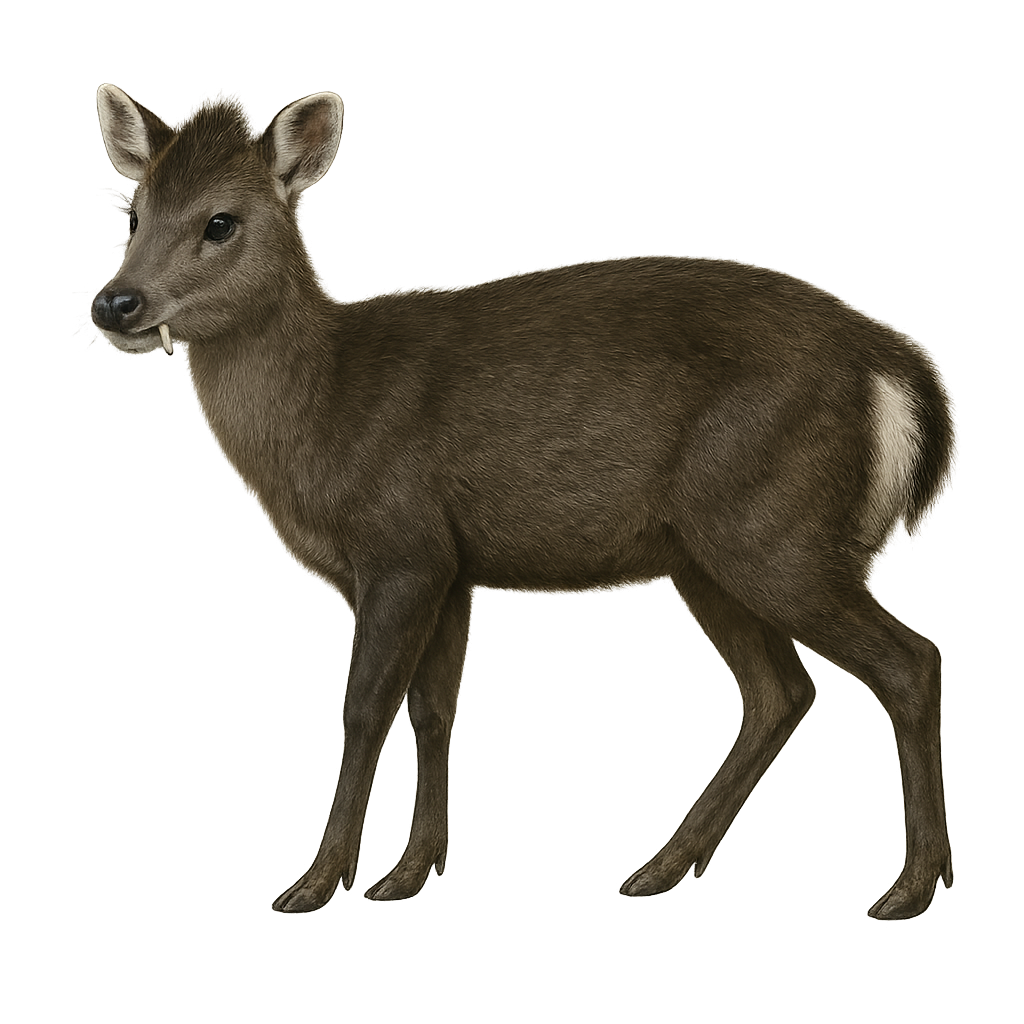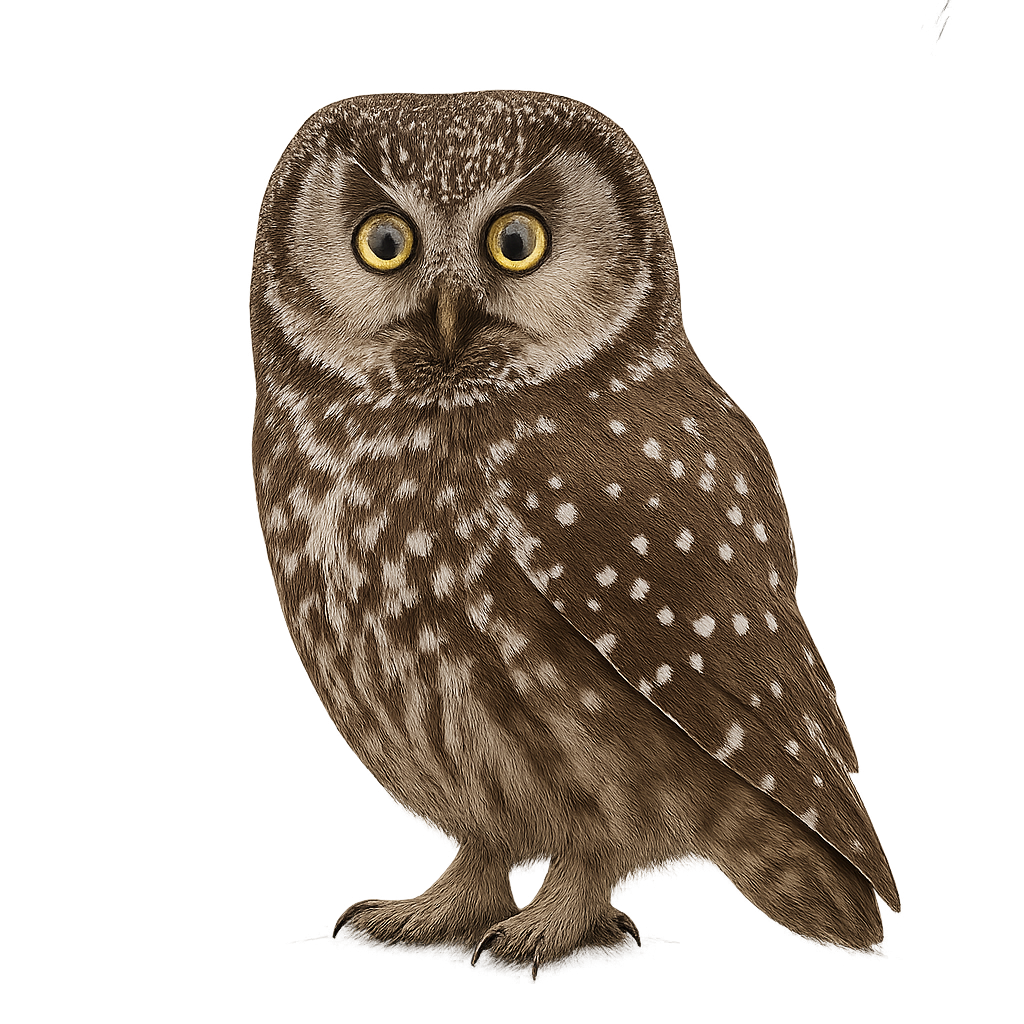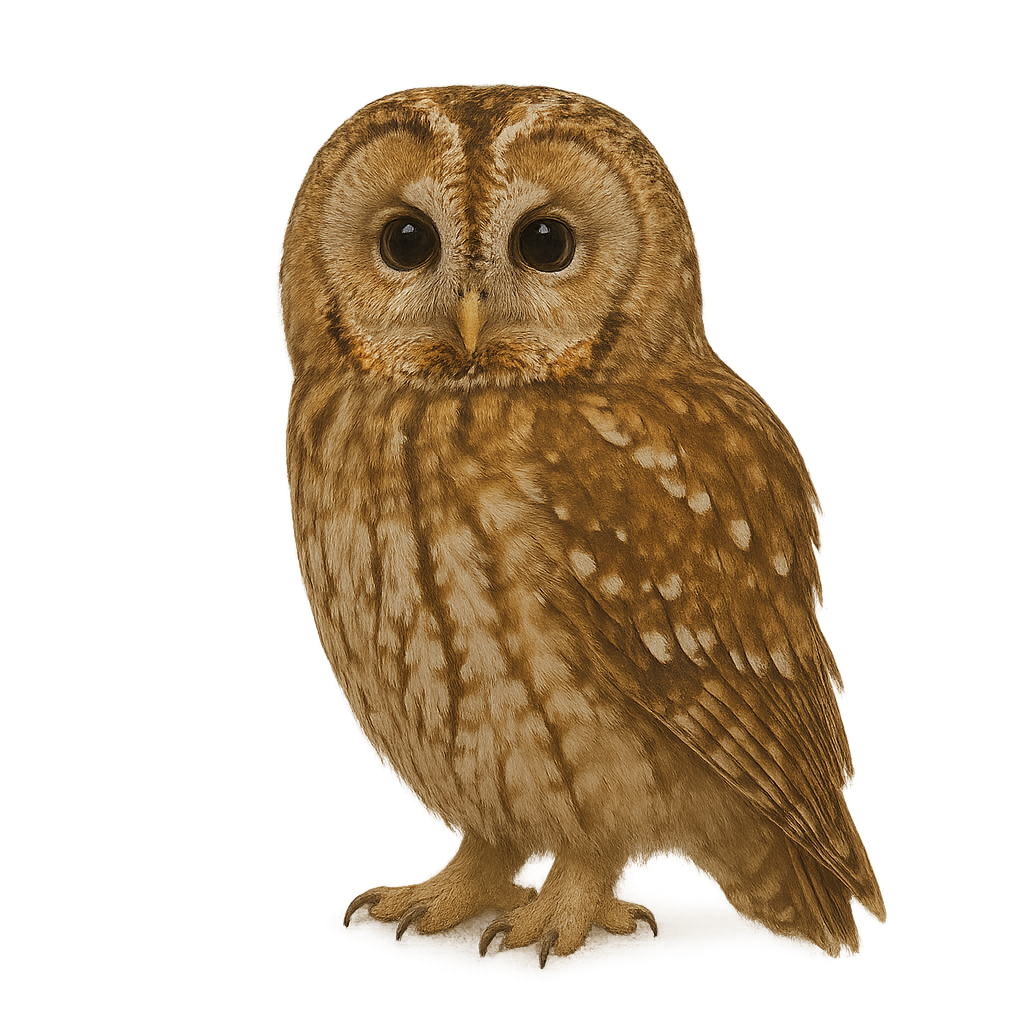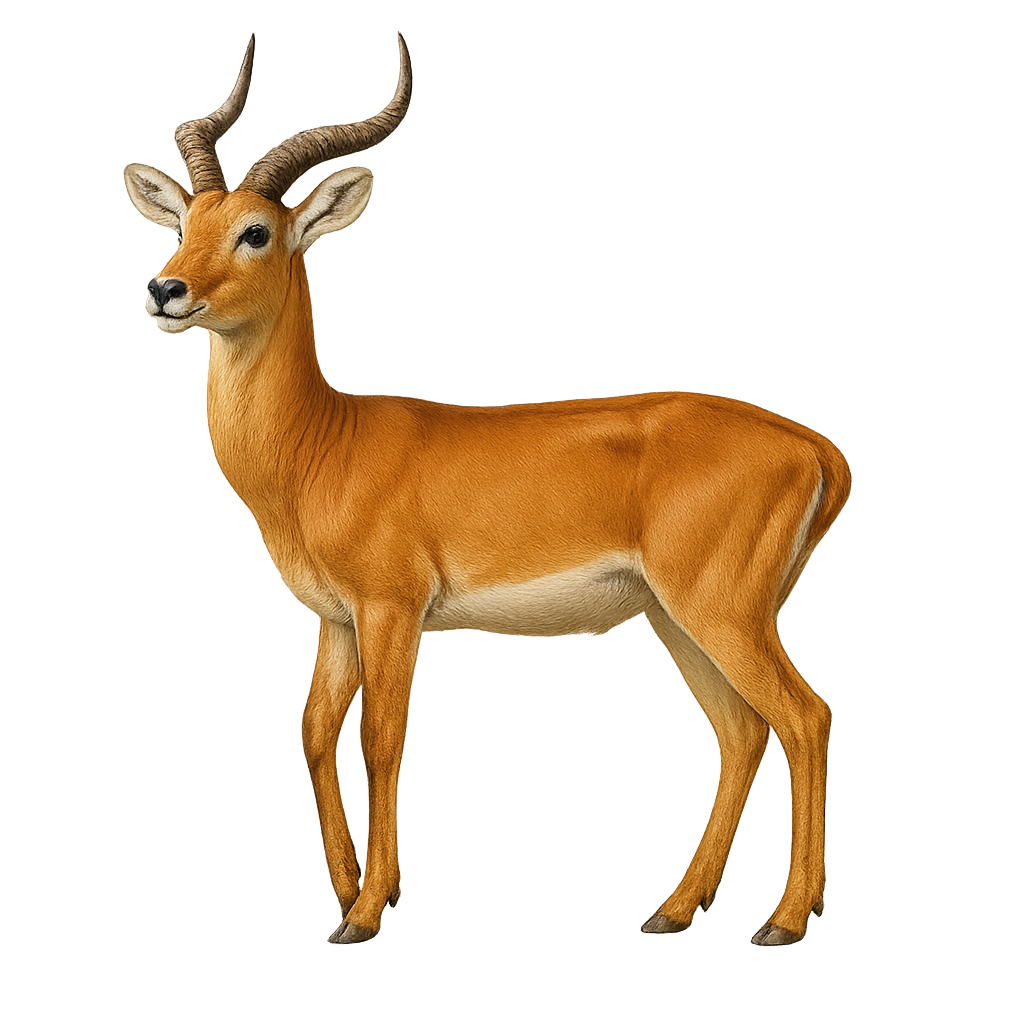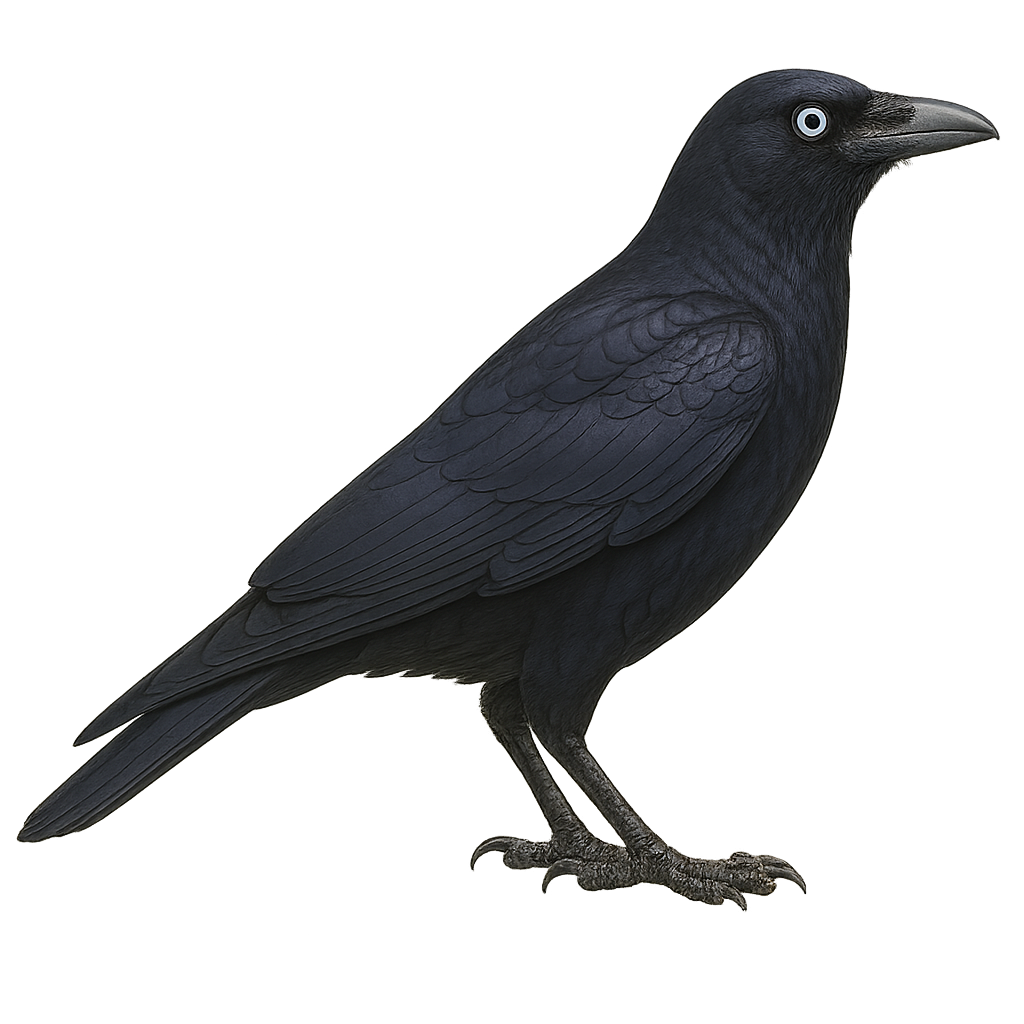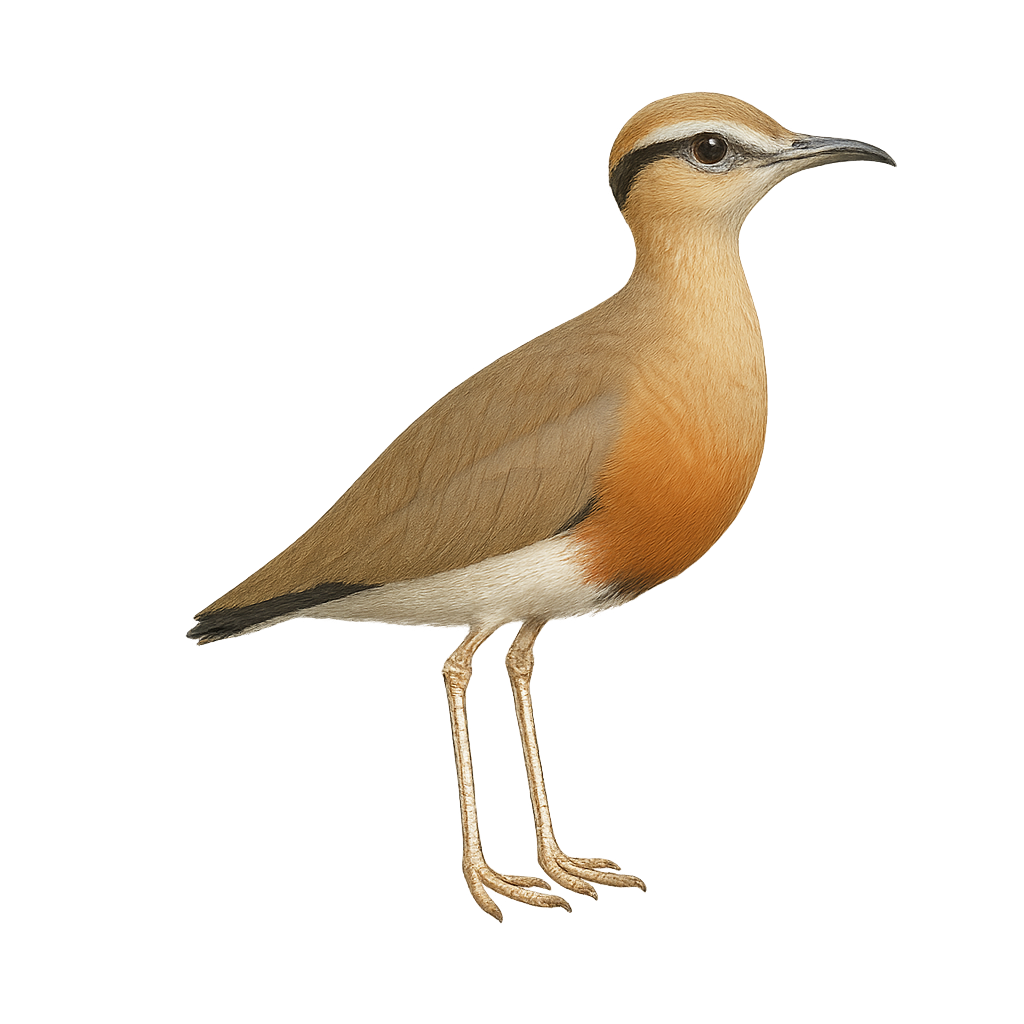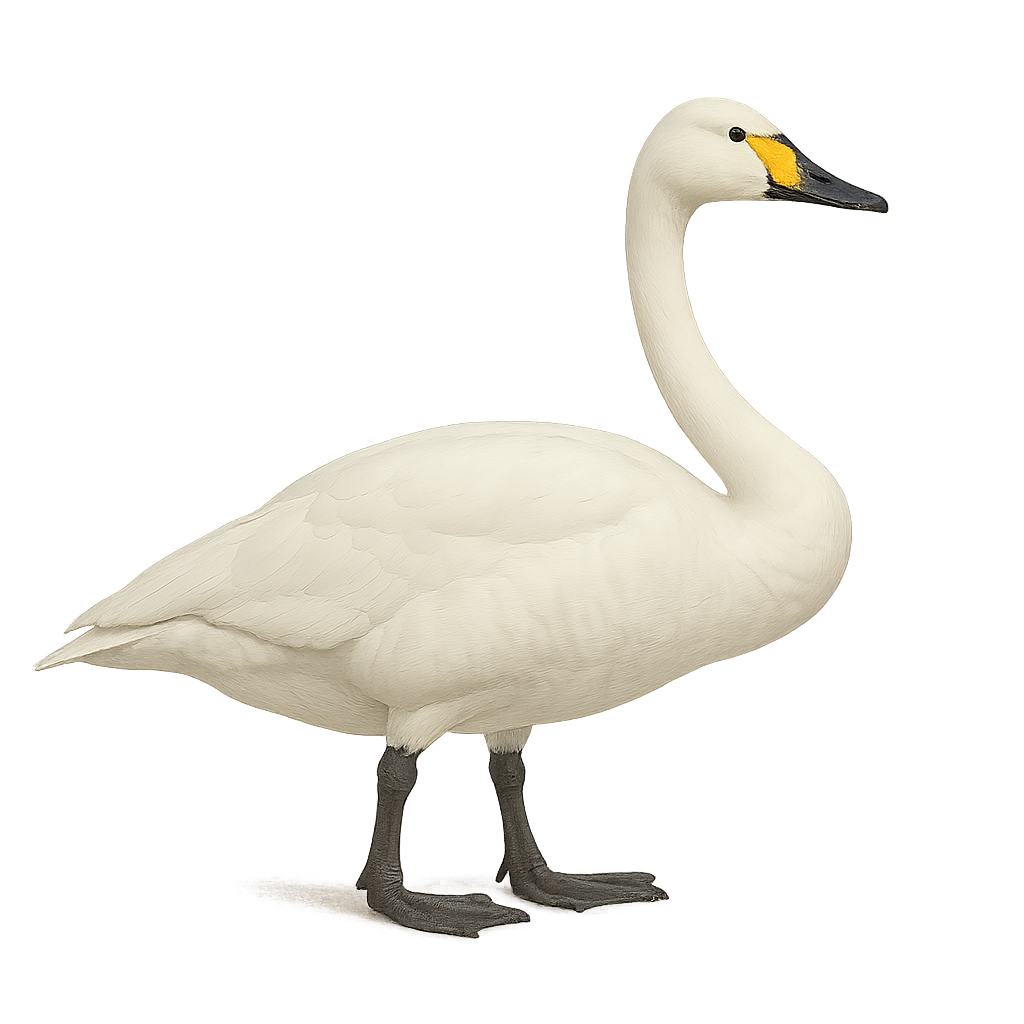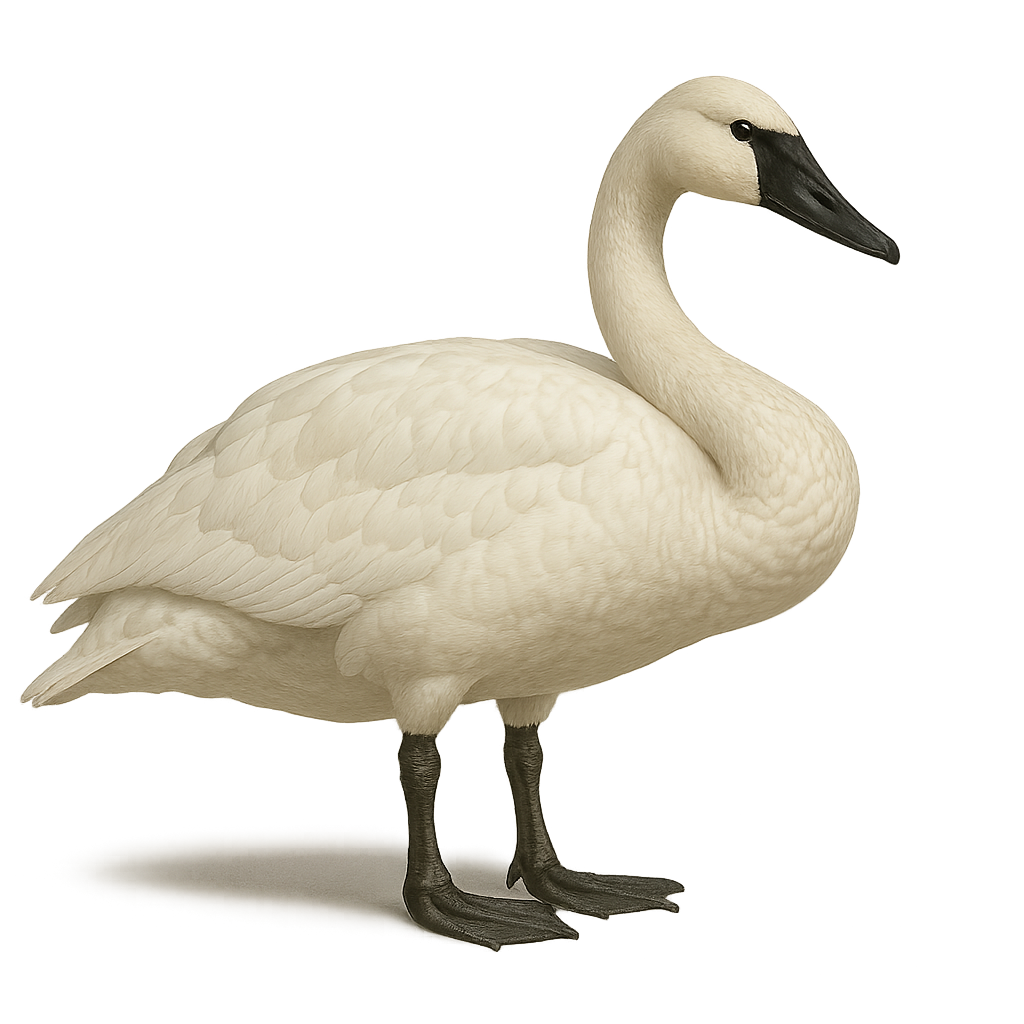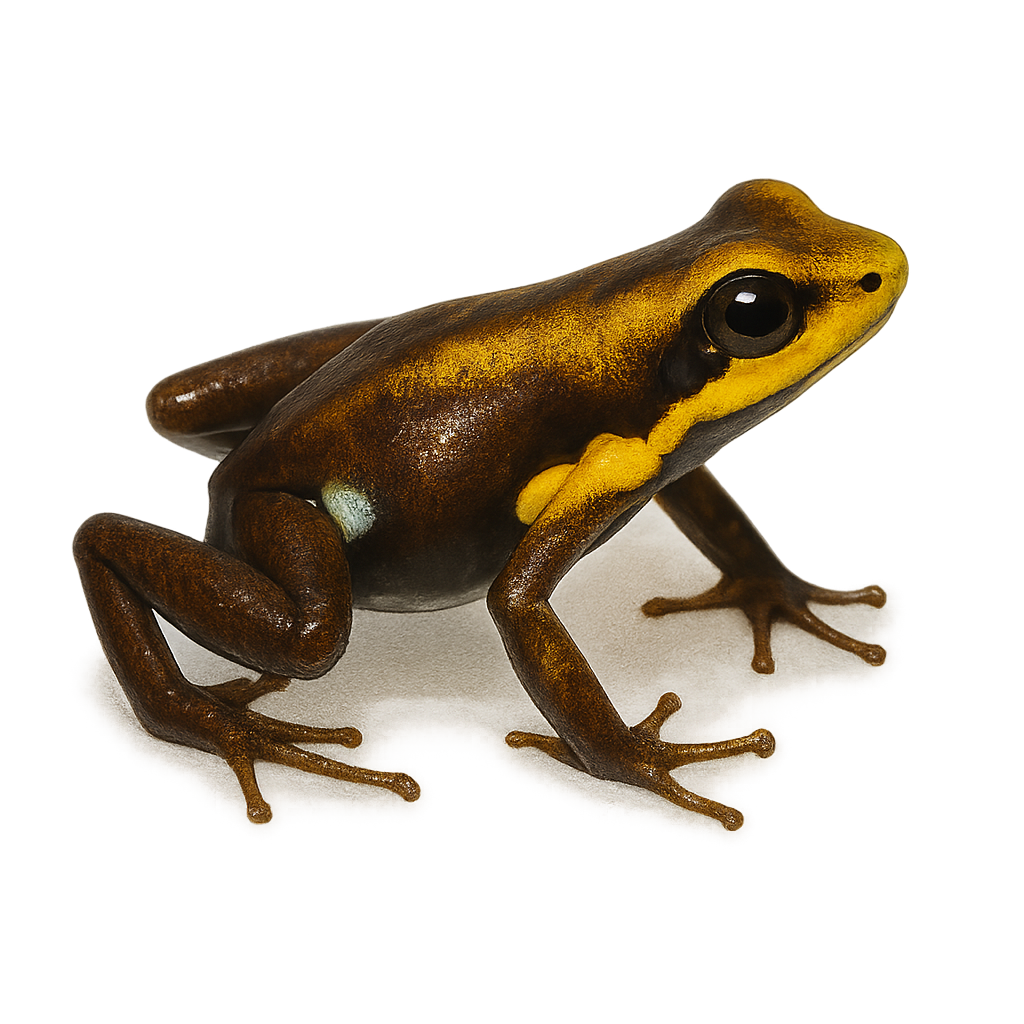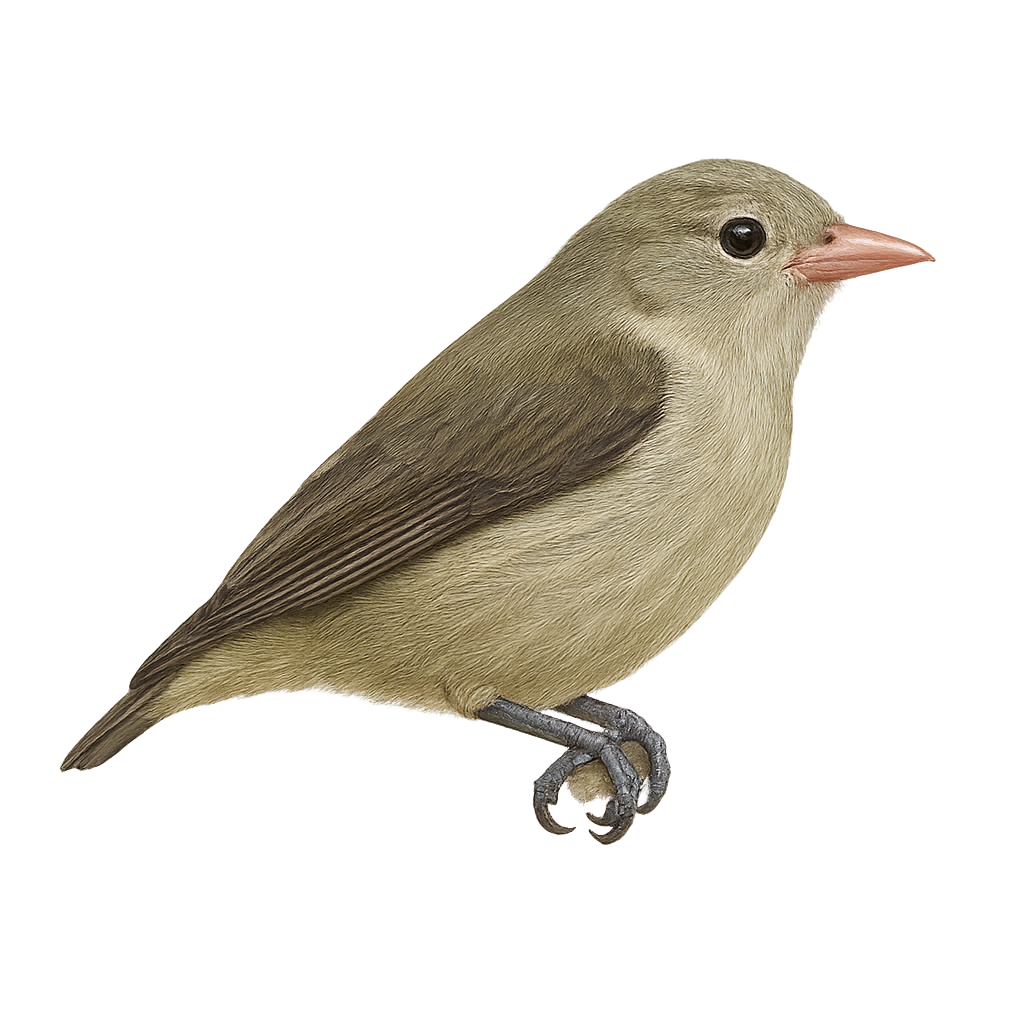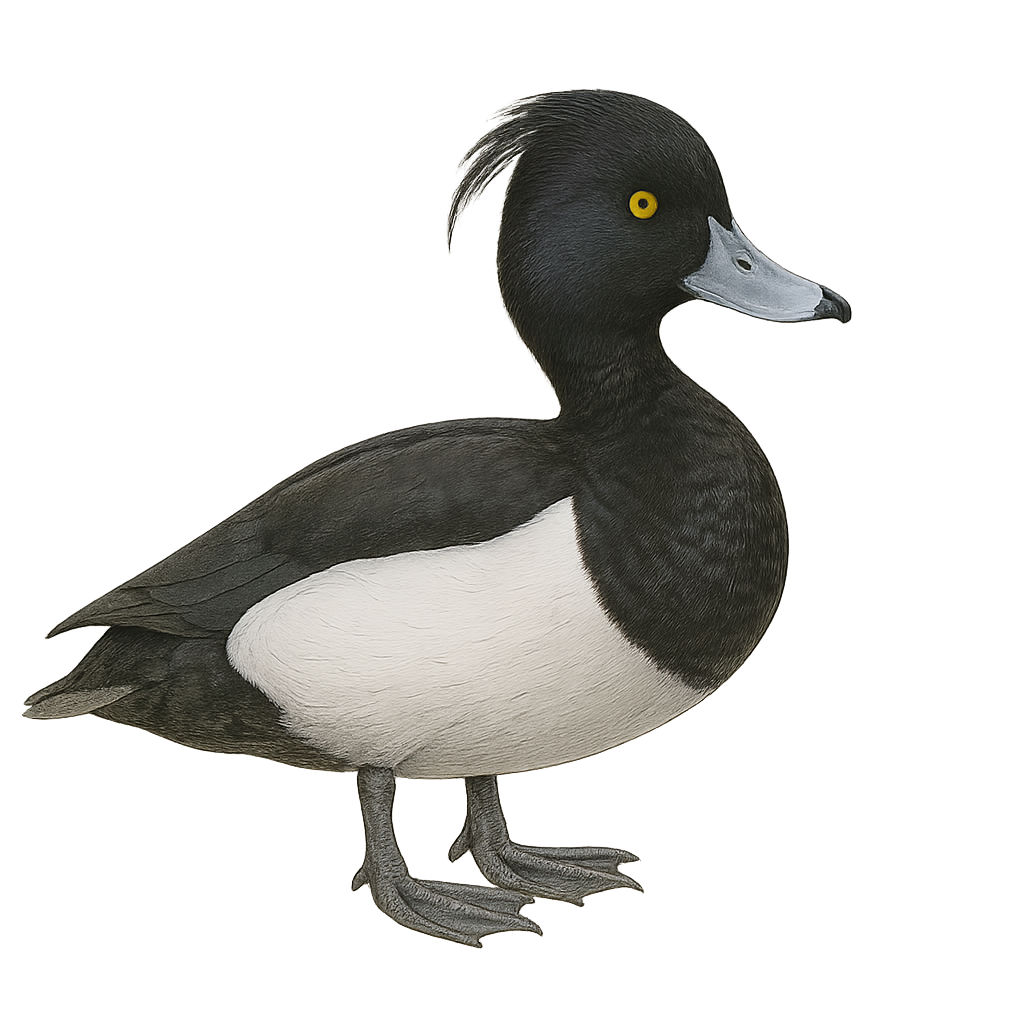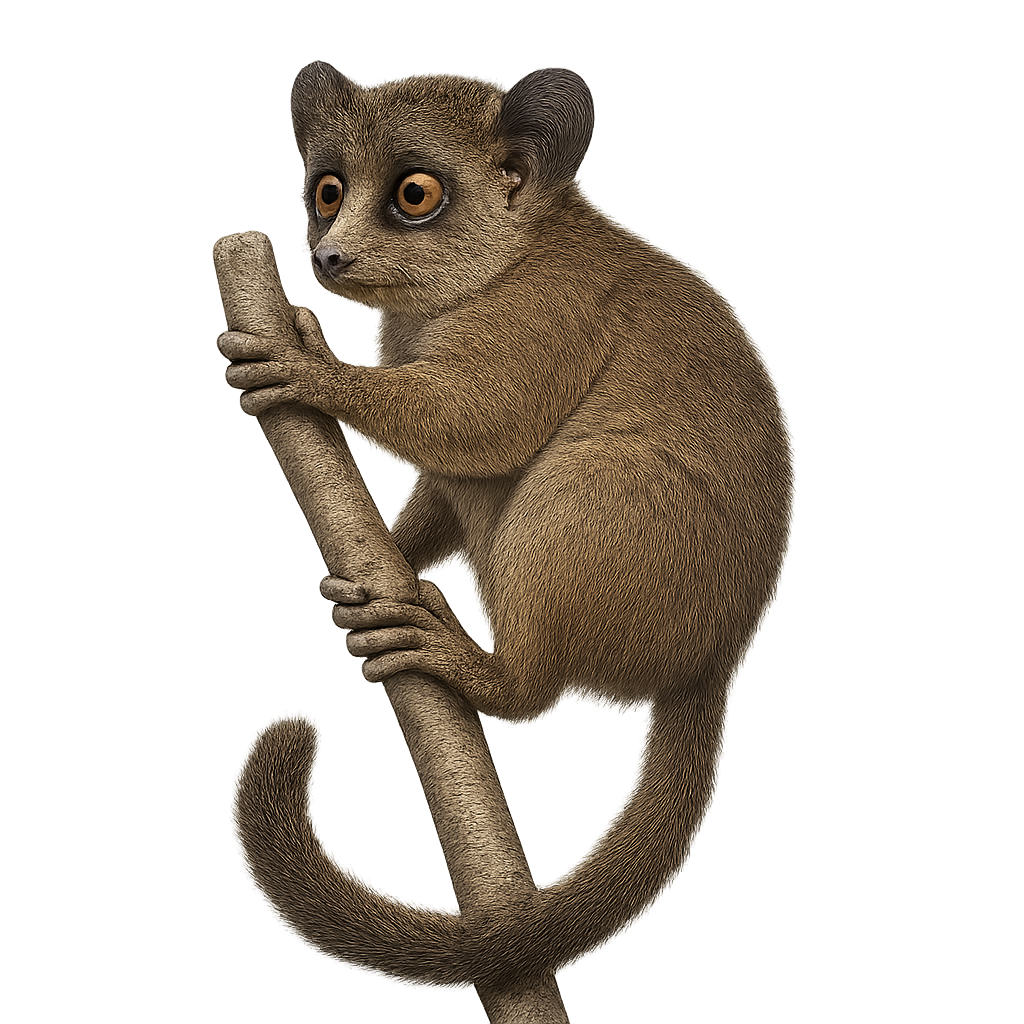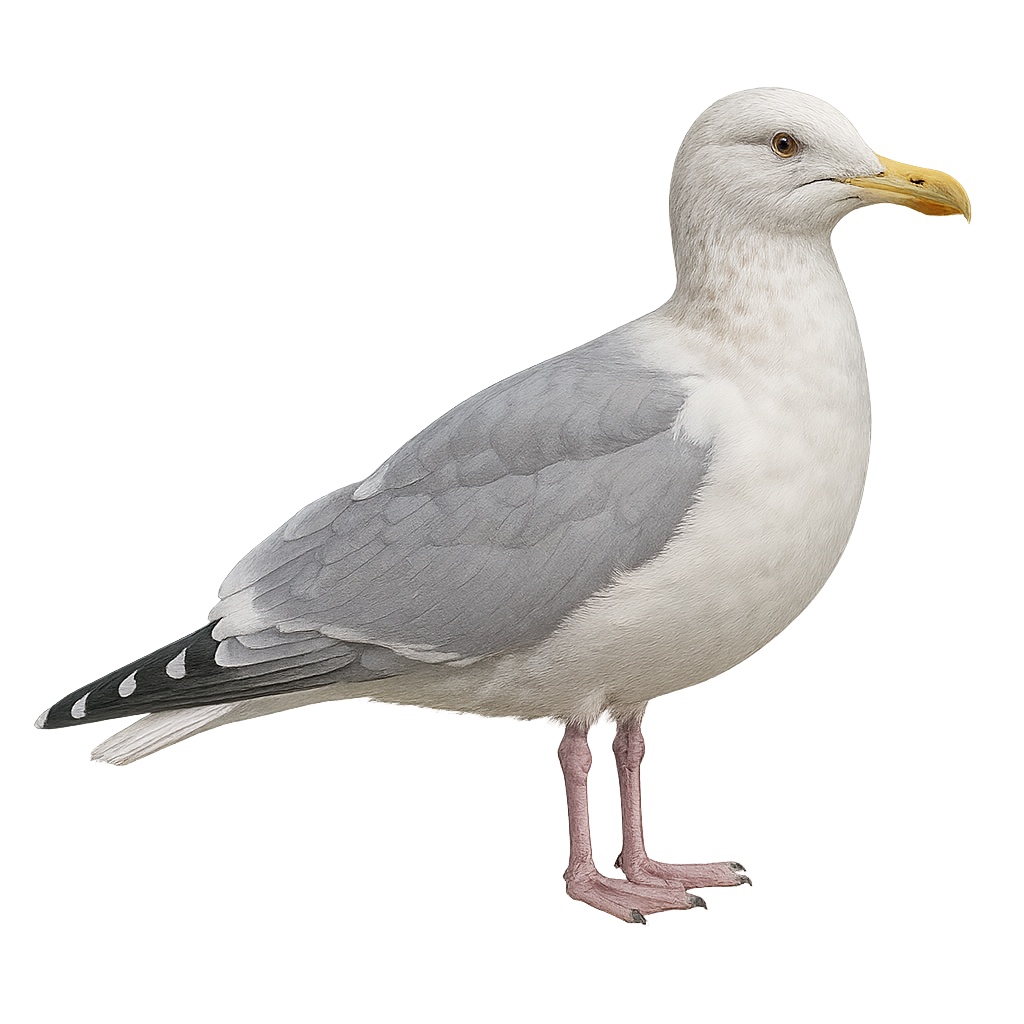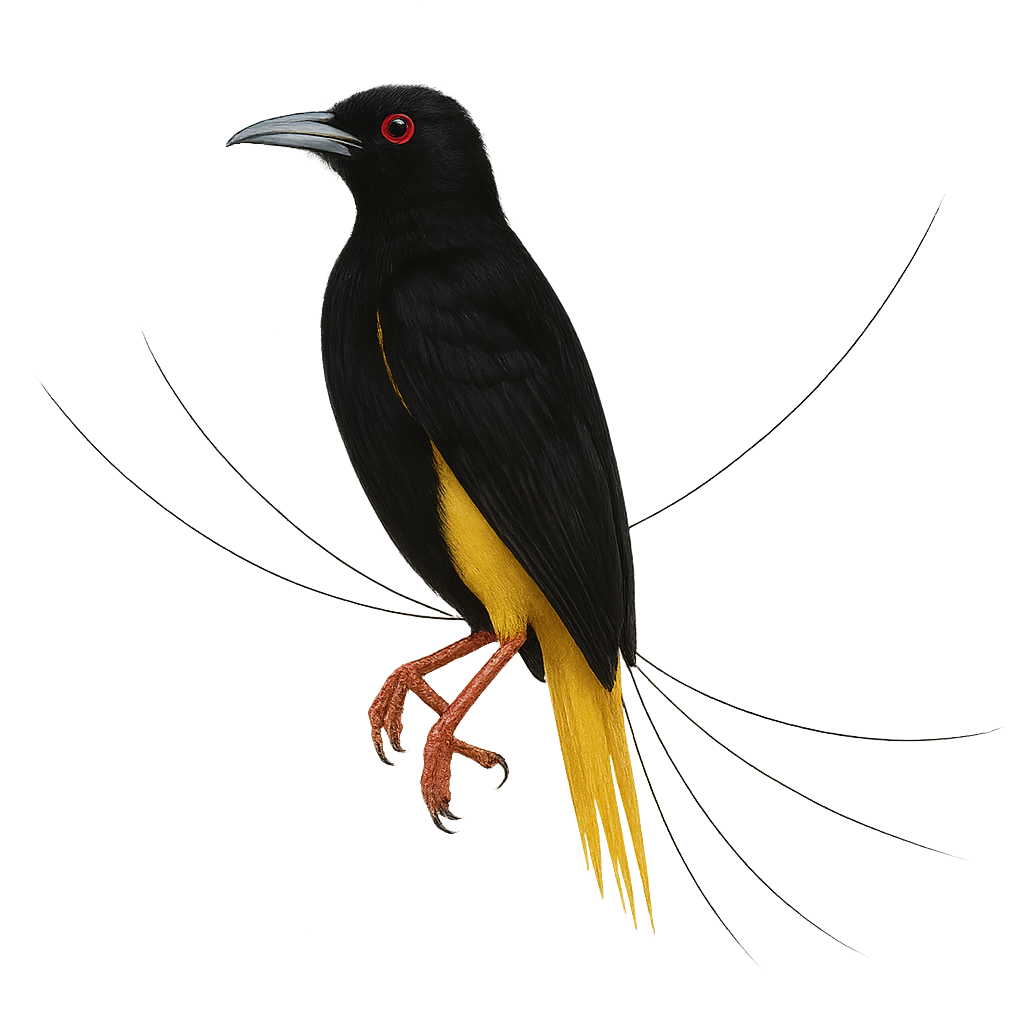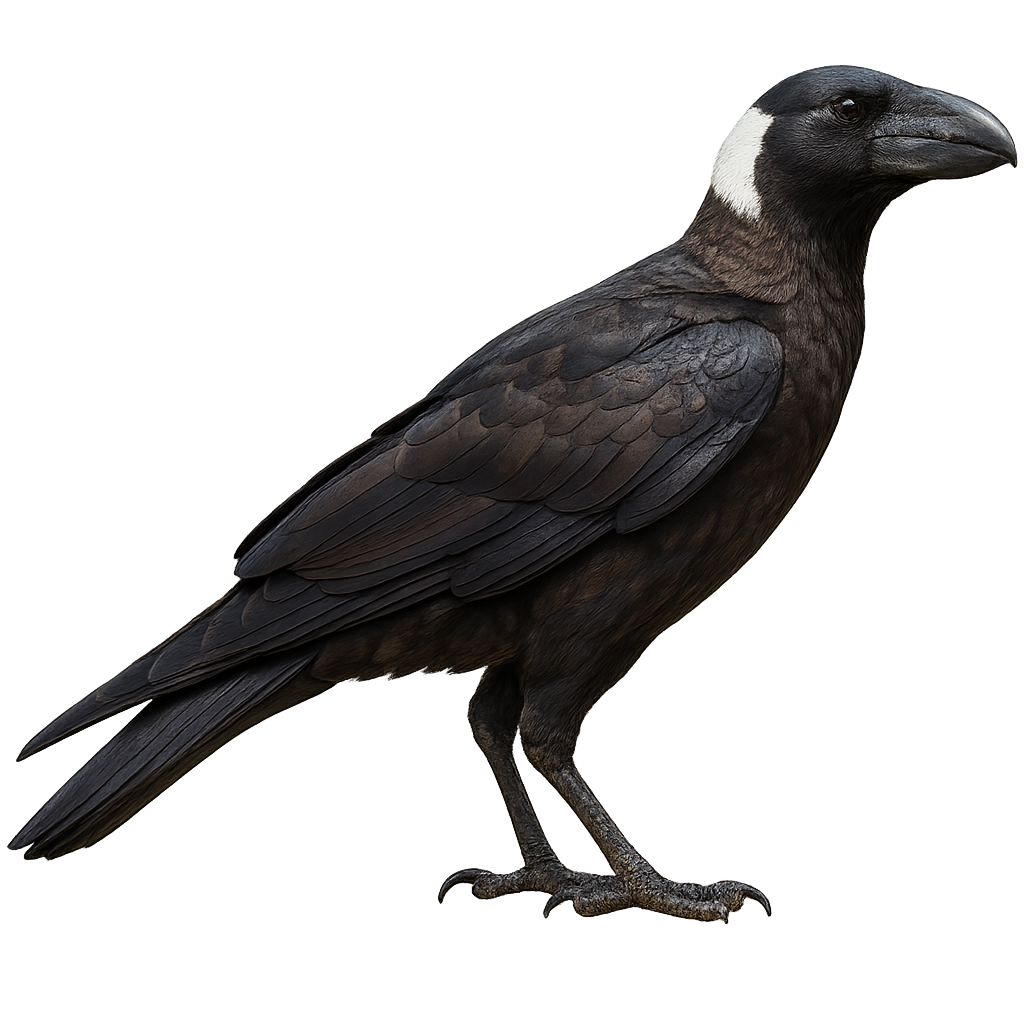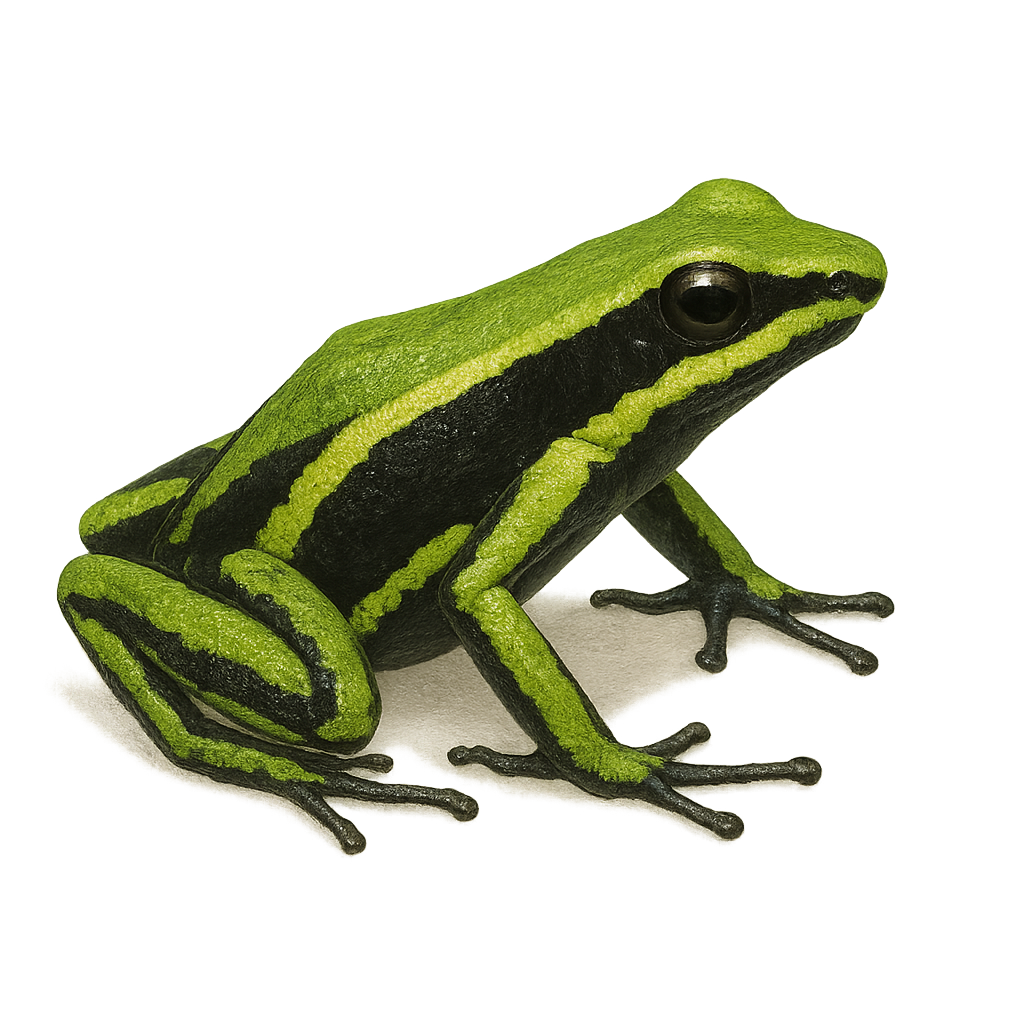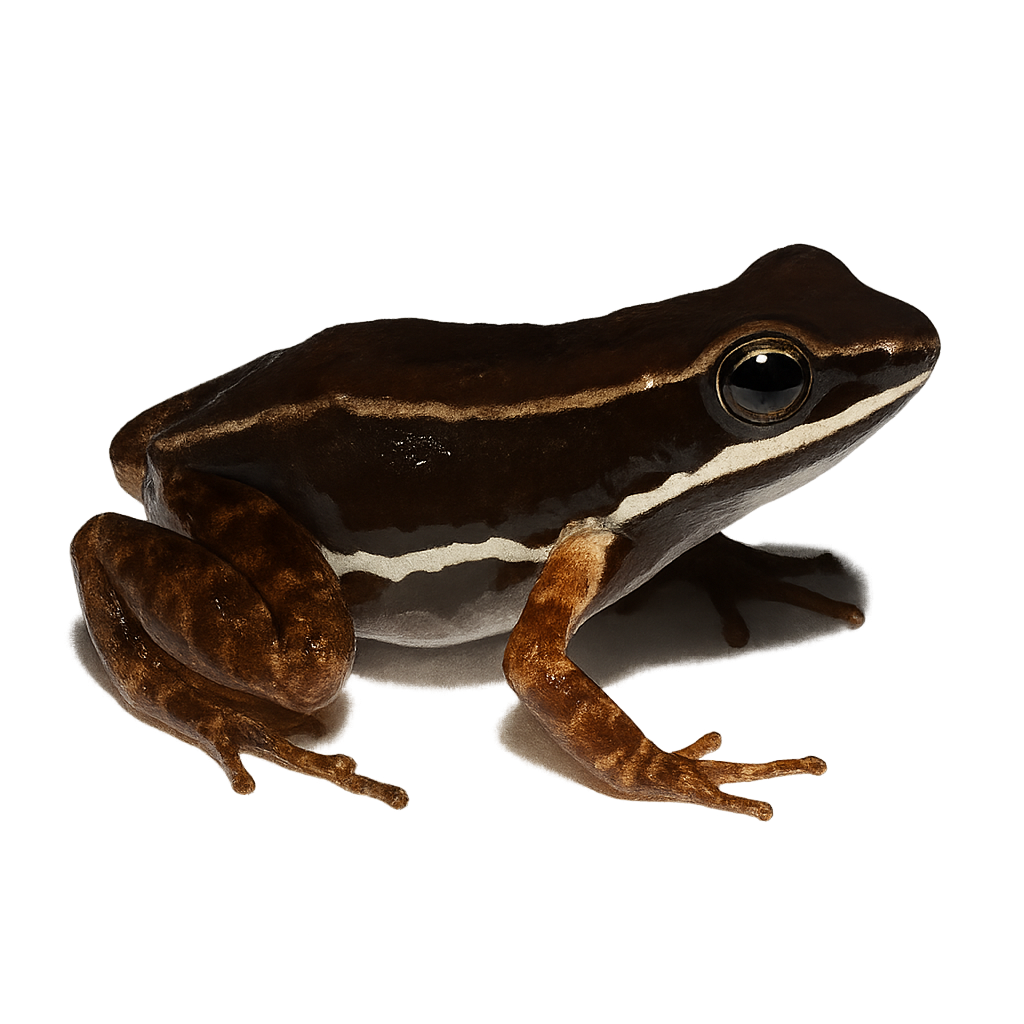The Tibetan Accentor, or Prunella immaculata, is a small passerine bird belonging to the Prunellidae family. It is primarily found in the mountainous regions of the Himalayas, including Tibet, Nepal, and Bhutan. This bird is characterized by its uniform brown-grey plumage, lacking distinctive markings, which helps it blend into its rocky environment. It inhabits high-altitude areas, often above 3000 meters, where it feeds mainly on insects and seeds. The Tibetan Accentor is a discreet bird, often seen alone or in small groups. Its ability to survive in extreme climatic conditions makes it a fascinating example of high-altitude adaptation.
The Tawny Eagle, or Aquila rapax, is a majestic bird of prey found mainly in sub-Saharan Africa and South Asia. This raptor is recognizable by its golden-brown plumage, broad wings, and relatively short tail. It measures between 60 and 75 cm in length with a wingspan of up to 2 meters. Preferring savannas, steppes, and semi-deserts, it primarily feeds on carrion but also hunts small mammals and birds. Its call is a piercing whistle, often heard during the breeding season. Although a solitary hunter, it can be seen in groups around carcasses.
The Tricolored Heron, Egretta tricolor, is a graceful and slender bird, recognizable by its distinctive slate-blue, white, and brown plumage. It measures about 56 to 76 cm in length with a wingspan of 96 to 115 cm. Its long, thin bill is ideal for catching fish and crustaceans in shallow waters. It is primarily found in marshes, mangroves, and estuaries of coastal regions in North, Central, and South America. The Tricolored Heron is a gregarious bird, often seen in small groups. It is known for its active hunting technique, running and flapping its wings to scare its prey.
The Toucan Barbet, or Semnornis ramphastinus, is a colorful and fascinating bird found primarily in the humid forests of the Andes. It is distinguished by its vibrant plumage, mixing shades of red, blue, and yellow, and its robust, colorful beak. This bird measures about 20 cm in length and weighs between 80 and 100 grams. It typically lives in pairs or small family groups and feeds mainly on fruits, but also on insects and small vertebrates. The Toucan Barbet plays a crucial role in seed dispersal, thus contributing to forest regeneration. Although its habitat is threatened by deforestation, it is currently classified as "least concern" by the IUCN.
The Trumpeter Hornbill, or Bycanistes bucinator, is a striking bird known for its appearance and behavior. It features a large bill with a prominent casque, which helps amplify its loud calls. This hornbill is primarily black with white underparts and wings marked with white. It inhabits the tropical forests of sub-Saharan Africa, feeding mainly on fruits, but also on insects and small animals. The Trumpeter Hornbill is a social bird, often seen in small groups. It plays a crucial role in seed dispersal, aiding forest regeneration. Its breeding season is marked by elaborate courtship rituals, and pairs are known for their fidelity.
The Turquoise Tanager, or Tangara mexicana, is a striking tropical bird found in humid forests and wooded edges of the Amazon Basin, from Venezuela to northern Brazil. It is easily recognized by its turquoise head, black back, yellow belly, and blue-edged wings, creating a vivid and eye-catching contrast. Active and gregarious, it often moves in small groups through the canopy, feeding on fruits, nectar, and insects. Its intense coloration makes it a favorite among bird photographers. The species has a stable population across its wide range.
The tufted deer, Elaphodus cephalophus, is a small deer species native to the mountainous forests of Asia, mainly in China and Myanmar. It is characterized by its modest size, standing about 50 to 70 cm at the shoulder, and its dark brown coat. Males have small antlers and prominent canines, giving them a distinctive appearance. This deer is primarily solitary, though it may occasionally be seen in small family groups. It is very discreet and prefers dense, wooded areas where it can hide from predators. The tufted deer is an herbivore, feeding on leaves, fruits, and young shoots.
Tengmalm's Owl is a small nocturnal raptor, easily recognized by its small size and large, piercing yellow eyes. It has gray-brown plumage with characteristic white markings on the head, wings, and back. Its ears are very inconspicuous, and its face is surrounded by a pale facial disc. This owl primarily inhabits coniferous forests, dense wooded areas, and mountains, where it hides in tree cavities or abandoned nests of other birds.
Tengmalm's Owl mainly hunts small mammals, birds, and insects, which it catches at night by flying silently through the forests. It is particularly active during the breeding season, when it emits characteristic calls to attract its mate. Although it is relatively discreet and often difficult to observe, Tengmalm's Owl is protected in some areas, though its population is threatened by deforestation and habitat loss.
The Tawny Owl is one of the most common owls in Europe, easily recognized by its round face forming a facial disc and its large, piercing black eyes. Its plumage is typically brown, with irregular white spots on the belly and back. It has a stocky body, broad wings, and silent flight, which is suited to its nocturnal hunting. This nocturnal raptor primarily inhabits broadleaf and mixed forests, as well as lowland wooded areas.
The Tawny Owl primarily hunts small mammals like rodents, as well as birds, insects, and worms. It uses its ability to fly silently to capture its prey, often in open areas like clearings, forest edges, or fields. It is also known for its characteristic calls, a deep, melodious "hoo-hoo." While its population remains stable in many parts of Europe, the Tawny Owl can be affected by habitat loss, light pollution, and human disturbances.
The Taczanowski's Cinclodes is an endemic bird of the Peruvian Andes, primarily found in high-altitude regions. It is recognizable by its dull brown plumage, with lighter shades on the belly and a distinctive white band on the wings. This bird is often seen foraging on the ground for insects and small invertebrates, its main diet. It is well adapted to the harsh mountain conditions, often spotted near streams and wetlands. Although its habitat is limited, it is not currently considered threatened, but habitat degradation could pose future risks.
The Thomas's kob is a subspecies of the kob antelope, primarily inhabiting the wet savannas and grasslands of West Africa. It is recognizable by its golden-brown coat, lyre-shaped horns, and medium size, reaching about 90 cm at the shoulder. Males are generally larger and more robust than females. They live in complex social groups, often consisting of harems led by a dominant male. The Thomas's kob is a herbivore, feeding mainly on grasses and aquatic plants. It is well adapted to its environment, capable of moving quickly to escape predators. Its population is stable, but it is threatened by hunting and habitat loss.
The Torresian Crow, or Corvus orru, is a medium-sized bird, predominantly black with metallic sheens. It is native to Australia and New Guinea, inhabiting a range of environments from tropical forests to urban areas. Known for its remarkable intelligence, this bird adapts well to various habitats. It primarily feeds on insects, fruits, and small animals but is also opportunistic, consuming human waste. Often seen in groups, the Torresian Crow communicates through a variety of calls and vocalizations. Its ability to solve complex problems and use tools is well-documented, making it a fascinating subject for ornithologists.
The Temminck's Courser, or Cursorius temminckii, is an elegant ground-dwelling bird primarily found in the arid and semi-arid regions of sub-Saharan Africa. It is distinguished by its sandy-brown plumage, long legs, and slender bill, adapted to its terrestrial lifestyle. This bird is often seen running swiftly on the ground in search of insects, its main food source. The Temminck's Courser is a diurnal bird, active mainly during the day. It is known for its ability to blend into its surroundings, making it difficult to spot. Although generally solitary, it can be seen in small groups during the breeding season.
The Tundra Swan, Cygnus columbianus, is a medium-sized waterfowl belonging to the Anatidae family. It is recognizable by its pure white plumage and black bill with a yellow spot at the base. This swan is known for its melodious call, which gives it its name. It primarily inhabits wetlands and lakes in Arctic and subarctic regions during the breeding season, then migrates to more temperate areas in winter. The Tundra Swan is a gregarious bird, often seen in large flocks. Its diet mainly consists of aquatic plants, which it uproots by dipping its long neck underwater.
The Trumpeter Swan, Cygnus buccinator, is the largest swan in North America, renowned for its pure white plumage and long, elegant neck. It is distinguished by its black bill and dark eyes. Its powerful, resonant call, reminiscent of a trumpet, gives it its name. This majestic swan frequents lakes, marshes, and rivers, feeding primarily on aquatic plants. It is often seen in small family groups. Although its population was once threatened by hunting and habitat loss, conservation efforts have led to an increase in numbers. The Trumpeter Swan is a symbol of beauty and grace in aquatic ecosystems.
The Common Damalisque is a medium-sized antelope, recognizable by its reddish-brown or gray-brown coat, with distinctive white markings on the legs and belly. It stands about 1.10 to 1.30 meters tall at the withers and weighs between 45 and 70 kg. This mammal primarily inhabits the savannas and open grasslands of East Africa, notably in Kenya, Tanzania, and Uganda. It mainly feeds on grasses and herbaceous plants but can also consume leaves and fruits when grass resources are limited. The Common Damalisque is known for its social behaviors, typically living in groups of females and young, while adult males are often solitary or form small groups. During the breeding season, males fight to defend their territory and access females. While it is currently listed as of least concern, the Common Damalisque faces threats such as habitat loss due to agriculture and urban expansion, as well as hunting for its meat and skin.
The Tolima Poison Frog, scientifically known as Andinobates tolimensis, is a small, brightly colored frog endemic to the tropical forests of Colombia. It is characterized by its smooth skin and vibrant colors, often a mix of red, orange, and black, which serve as a warning to potential predators of its toxicity. This species is typically found in humid undergrowth, where it primarily feeds on small insects. It plays a crucial role in the ecosystem by controlling insect populations. Unfortunately, due to deforestation and habitat loss, the Tolima Poison Frog is considered vulnerable. Conservation efforts are essential to protect this unique species and its natural habitat.
The Tasmanian Devil is a medium-sized carnivorous marsupial, easily recognized by its black fur and white patches on its chest and hips. It measures about 50 cm in length, with a tail of 25 cm, and weighs between 5 and 10 kg. This nocturnal predator is found exclusively on the island of Tasmania, where it primarily feeds on small mammals, birds, insects, and carcasses of dead animals. The Tasmanian Devil is known for its aggressive feeding behavior, often making growling and screaming noises. It is also a solitary animal, only coming together during breeding or when it finds a large carcass. While this species plays an important scavenging role in its ecosystem, it is now threatened by a devastating infectious disease, Devil Facial Tumour Disease (DFTD), which has significantly reduced its population. Habitat loss and vehicle collisions also pose threats to its survival.
The Thorny devil is a fascinating lizard native to the deserts of Australia. Its skin is covered with sharp spines that allow it to camouflage effectively among rocks and desert vegetation. It primarily feeds on ants, which it captures using its sticky tongue. When threatened, it adopts a defensive posture, inflating its body and displaying its spines to appear larger and more threatening. While calm, it is an expert in the art of camouflage and uses its appearance to protect itself from predators.
The Tickell's Flowerpecker is a small passerine bird belonging to the Dicaeidae family. It is primarily found in the Indian subcontinent, inhabiting forests, gardens, and wooded areas. This bird is recognizable by its bright red bill, contrasting with its grey and white plumage. It feeds mainly on fruits, nectar, and occasionally insects. The Tickell's Flowerpecker is an active and agile bird, often seen hopping from branch to branch in search of food. Although it is quite common within its range, it is often difficult to spot due to its small size and discreet behavior.
The Tufted Duck is a medium-sized, elegant diving duck, measuring 40 to 47 cm in length. The male displays glossy black plumage with striking white flanks and a distinctive black tuft on the back of the head. The female is dark brown with paler flanks and a more modest tuft. Both sexes have a bluish-grey bill and bright yellow eyes. This species frequents lakes, ponds, reservoirs, and slow-moving rivers, often in flocks, and prefers areas rich in aquatic vegetation. It feeds mainly on mollusks, insect larvae, crustaceans, and aquatic seeds. A partial migrant, it is present year-round in temperate regions. Generally of Least Concern, though locally threatened by water pollution and wetland loss.
The Thomas's Dwarf Galago, or Galagoides thomasi, is a small nocturnal primate native to the tropical forests of Central Africa. This galago is characterized by its small size, large eyes adapted for night vision, and long hind legs that allow it to leap agilely between branches. Its fur is typically gray-brown with lighter shades on the belly. It primarily feeds on insects but also consumes fruits and sap. Galagos are known for their high-pitched calls and complex social behaviors, although they are often solitary. They play a crucial role in the ecosystem as insect predators and seed dispersers.
The Thomson's Gazelle is a small, elegant gazelle known for its speed and grace. It stands about 60 cm at the withers, with a body length of 90 cm, and weighs between 20 and 30 kg. Its coat is mainly beige, with distinct white markings on its belly and a black stripe running along each side of its body. The adult male has curved lyre-shaped horns, while females generally lack them. The Thomson's Gazelle primarily inhabits the savannas and grasslands of East Africa, particularly in Tanzania and Kenya. It is herbivorous, feeding mainly on grasses, young shoots, and leaves. Very fast, the Thomson's Gazelle can reach speeds of 80 to 90 km/h, allowing it to escape many predators. Although it is currently relatively common, the Thomson's Gazelle faces threats related to habitat loss and human activities, including hunting and competition with livestock.
The Tokay gecko is a large lizard native to the tropical forests of Southeast Asia. This gecko is particularly known for its vibrant colors, with a gray or bluish body speckled with orange or red spots, making it easily recognizable. The Tokay gecko is nocturnal and arboreal, living in forested habitats, often near human dwellings. It is also famous for its distinctive call, resembling its name, tokay," which it uses to defend its territory or attract a mate. This gecko is a carnivorous predator, feeding mainly on insects and small vertebrates."
The Thayer's Gull, Larus thayeri, is a medium-sized seabird belonging to the Laridae family. It is characterized by its pale gray plumage on the back and wings, contrasting with a white belly. Its bill is yellow with a red spot on the lower mandible, and it has pink legs. Found mainly in the Arctic and subarctic regions of North America, particularly in Canada and Alaska, it nests on coastal cliffs and islands. As a migratory bird, it winters along the Pacific coast from southern Alaska to California. An opportunistic feeder, it consumes fish, invertebrates, and human waste. Although often confused with other gull species, it is recognized for its graceful flight and distinctive calls.
The Twelve-wired Bird-of-paradise, or Seleucidis melanoleucus, is a remarkable bird known for its striking plumage and courtship displays. Males feature black and white feathers with distinctive golden wires on their tails, used to attract females. This bird inhabits the rainforests of New Guinea, feeding primarily on fruits and insects. Its song plays a crucial role in its social behavior, often heard at dawn. Although its habitat is threatened by deforestation, it remains relatively common in certain areas. Its ability to adapt to various forest environments gives it some resilience against environmental changes.
The Thick-billed Raven, or Corvus crassirostris, is a raven species endemic to the highlands of Ethiopia and Eritrea. Recognizable by its massive, curved bill, it is the largest of the African ravens. Its plumage is predominantly black with metallic sheen, and it features a distinctive white patch on the nape. This raven is often seen in small groups, exploring mountainous landscapes in search of food. An opportunist, it feeds on a variety of items, from insects to small vertebrates, as well as fruits and seeds. Its intelligence and adaptability allow it to thrive in diverse environments, although it is primarily associated with rocky areas and cliffs.
Ameerega trivittata is a colorful and toxic frog native to the humid tropical forests of South America. It is distinguished by its longitudinal yellow or green stripes on a black background, serving as a warning to potential predators. This species is diurnal and primarily feeds on small insects. It is often observed on the forest floor, using its bright colors to deter predators. The three-striped poison frog plays a crucial role in the ecosystem by regulating insect populations. Although its skin is toxic, it is not dangerous to humans unless handled directly.
The Talamanca Rocket Frog is a small-sized species, typically brownish with darker patterns on its back. It is primarily found in the lowland humid forests of Central America, particularly in Costa Rica and Panama. This species is known for its ability to leap long distances, allowing it to quickly escape predators. It primarily feeds on small insects and other invertebrates. Males are often heard calling near water bodies to attract females. Reproduction occurs in water, where eggs are laid and tadpoles develop.
The Tomato Frog is a striking amphibian species native to Madagascar, easily recognizable by its bright red color and large skin glands that secrete a toxic mucus when threatened. These frogs grow to about 10 cm and are primarily terrestrial, living in the dry tropical forests and savannas of Madagascar. Their bright coloration serves as a warning signal to predators. They are nocturnal and spend the day hiding under leaves or in burrows to avoid heat and predators. During the breeding season, they gather near water sources where they lay their eggs.


